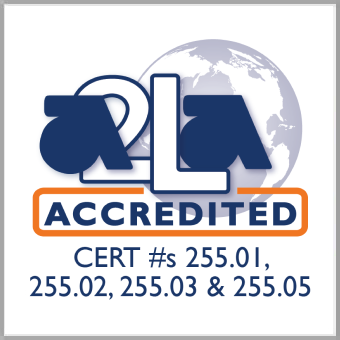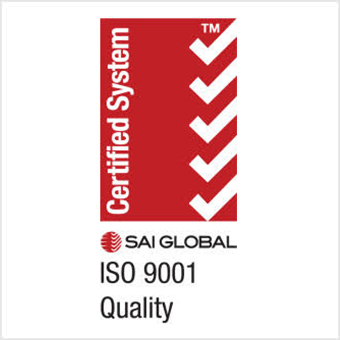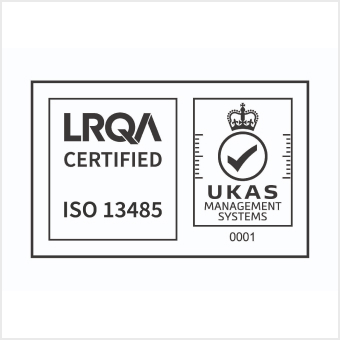ISO 1817
1. Introduction to ISO 1817
ISO 1817 is an international standard developed by the International Organization for Standardization (ISO) that specifies the procedure for determining the effect of liquids on rubber materials. This standard is crucial for assessing how rubber components perform when exposed to different substances, including oils, fuels, chemicals, and water, which they might encounter during use.
Rubber is widely used in industries ranging from automotive (seals, gaskets, tires) to industrial manufacturing, and understanding how it interacts with liquids is vital to ensuring its long-term performance and durability. ISO 1817 provides a method to evaluate the change in the properties of vulcanized or thermoplastic rubber when it comes into contact with various liquids.
2. Purpose and Scope
The primary purpose of ISO 1817 is to establish a standardized method for evaluating the compatibility of rubber materials with liquids. This is particularly important for assessing the material’s:
- Physical properties: Including tensile strength, elongation, hardness, and modulus after liquid exposure.
- Chemical resistance: How the rubber reacts to different chemicals, oils, fuels, and solvents.
- Durability: Long-term effects on the rubber, such as swelling, cracking, softening, or degradation.
ISO 1817 is applicable to a wide range of rubber materials, including both vulcanized (cross-linked) rubber and thermoplastic rubber. It is widely used in industries such as automotive, aerospace, construction, and manufacturing, where rubber components are exposed to various liquids during normal operation.
3. Key Components and Requirements of ISO 1817
The standard details the methodology for testing rubber exposed to liquids and includes the following:
- Test Liquids:
- ISO 1817 defines a set of liquids that are commonly used for testing rubber materials. These liquids are selected because they are representative of substances that rubber components may encounter in real-world applications. The most common test liquids include:
- Oils: Mineral oils, engine oils, lubricants.
- Fuels: Gasoline, diesel, biofuels.
- Solvents: Acetone, ethanol, toluene.
- Water: Distilled or tap water to test the material’s behavior in wet conditions.
- Chemicals: Acidic, alkaline, or saline solutions.
- The choice of liquid depends on the intended application of the rubber component and the type of environment it will operate in.
- ISO 1817 defines a set of liquids that are commonly used for testing rubber materials. These liquids are selected because they are representative of substances that rubber components may encounter in real-world applications. The most common test liquids include:
- Sample Preparation:
- Rubber samples are prepared and cut according to specific dimensions to ensure consistent testing.
- Samples may be conditioned (e.g., pre-aged or heated) to simulate real-world conditions that the rubber might face before being exposed to liquids.
- The rubber samples are generally prepared in standard shapes (such as strips or slabs) to be submerged in liquids for a predetermined period.
- Exposure Conditions:
- Rubber samples are submerged in the chosen liquid for a specified duration, and the exposure temperature is often controlled to replicate operational conditions (e.g., room temperature or elevated temperatures depending on the testing requirements).
- The exposure time can vary depending on the expected life cycle of the rubber component in the end-use environment, from hours to weeks or even months.
- Evaluation Criteria:
- After exposure to the liquid, the rubber samples are removed and evaluated for changes in their physical and mechanical properties, such as:
- Tensile Strength: The force required to break the rubber after exposure.
- Elongation at Break: How much the rubber can stretch before breaking.
- Hardness: Measured using a durometer to assess changes in the material’s stiffness.
- Swelling: The degree to which the rubber has expanded after being exposed to the liquid.
- Mass Change: A measure of how much the sample’s weight has increased or decreased due to absorption or evaporation of the liquid.
- Visual inspection is often used to check for signs of cracking, discoloration, or other forms of material degradation.
- After exposure to the liquid, the rubber samples are removed and evaluated for changes in their physical and mechanical properties, such as:
- Reporting Results:
- The results of the tests are presented in terms of percentage change relative to the original properties of the rubber.
- For example, the change in tensile strength, elongation, and hardness are reported, along with any visual observations.
- The data helps determine whether the rubber material is suitable for the intended application or whether it needs to be modified to improve its resistance to specific liquids.
4. Types of Tests in ISO 1817
Several key tests are defined within ISO 1817 to evaluate the effects of liquids on rubber:
- Swelling Test:
- This test measures how much the rubber swells after being exposed to a liquid. The swelling is typically caused by the absorption of liquid into the rubber matrix, which can change the material’s properties.
- The degree of swelling is calculated as the percentage increase in volume or weight, and the result is compared with the original dimensions or mass of the rubber.
- Tensile Test:
- A tensile test is used to evaluate how much the rubber material can stretch before breaking. The rubber sample is pulled until it tears, and the force required to break it is measured.
- Changes in tensile strength after exposure to a liquid indicate how the liquid has affected the rubber’s mechanical properties.
- Elongation Test:
- The elongation test measures how much the rubber can stretch as a percentage of its original length before breaking.
- This test is particularly useful for understanding how flexible or brittle the material has become after exposure to the liquid.
- Hardness Test:
- Hardness is typically measured using a Shore A durometer, which measures the resistance of the rubber to indentation.
- A significant change in hardness after exposure to liquids may indicate the material has either softened or become brittle.
- Compression Set Test:
- This test measures the ability of rubber to return to its original shape after being compressed for a period.
- Exposure to certain liquids may affect the rubber’s ability to recover from deformation.
- Visual Inspection:
- A visual inspection is conducted to check for any visible signs of degradation, such as cracking, discoloration, or softening, that may not be detected through mechanical testing.
5. Applications of ISO 1817
The standard is widely used across many industries where rubber components are exposed to different liquids, including:
- Automotive Industry:
- Rubber seals, gaskets, hoses, and fuel system components are tested for resistance to oils, fuels, and coolants.
- Tires are tested for exposure to water and various chemicals encountered on the road.
- Aerospace:
- Rubber materials used in aircraft and spacecraft applications are tested for fuel resistance, hydraulic fluids, and other chemicals encountered in the aerospace environment.
- Industrial Manufacturing:
- Rubber components used in industrial machinery and processing equipment are tested for resistance to oils, lubricants, and chemicals in manufacturing plants.
- Construction:
- Rubber seals, expansion joints, and gaskets used in construction are exposed to water, chemicals, and extreme environmental conditions.
- Marine Industry:
- Rubber used in marine seals, hoses, and engine components is tested for resistance to seawater, oils, and marine fuels.
6. Challenges and Considerations
While ISO 1817 provides standardized testing methods, there are challenges:
- Real-World Conditions: Rubber materials may encounter a wide range of liquids, combinations of liquids, and environmental conditions, which are not always fully replicated in laboratory tests.
- Material Variability: Different rubber formulations may behave differently when exposed to liquids, requiring tailored testing for each material.
- Time-Consuming Testing: Some tests, particularly long-term exposure tests, can take weeks or months to yield comprehensive results.
7. Conclusion
ISO 1817 is an essential standard for evaluating the effects of liquids on rubber materials. By providing standardized testing procedures, it helps manufacturers assess the performance, durability, and safety of rubber components exposed to various substances. This ensures that rubber materials are fit for purpose in applications ranging from automotive to industrial, where they must withstand exposure to oils, fuels, solvents, and other liquids.
Rubber, Vulcanized or Thermoplastic – Determination of the Effect of Liquids



